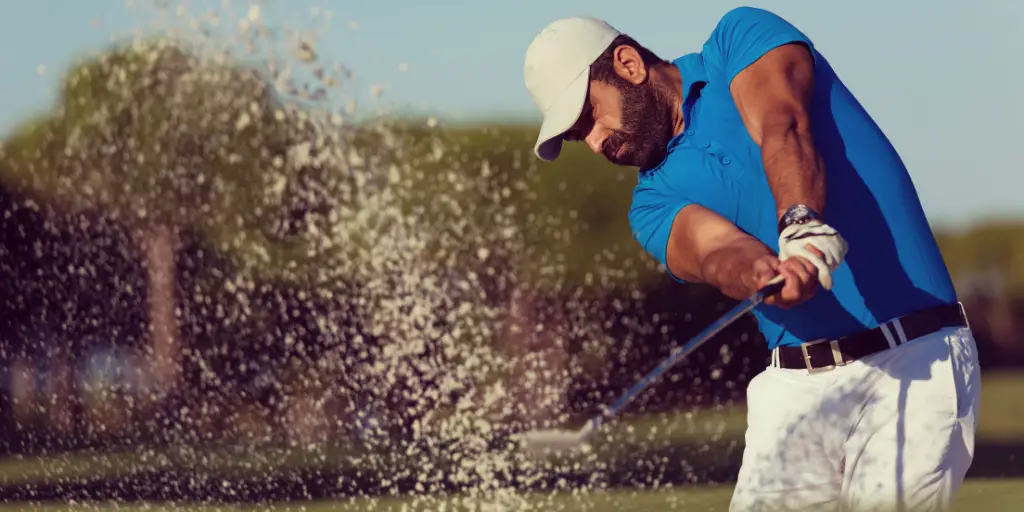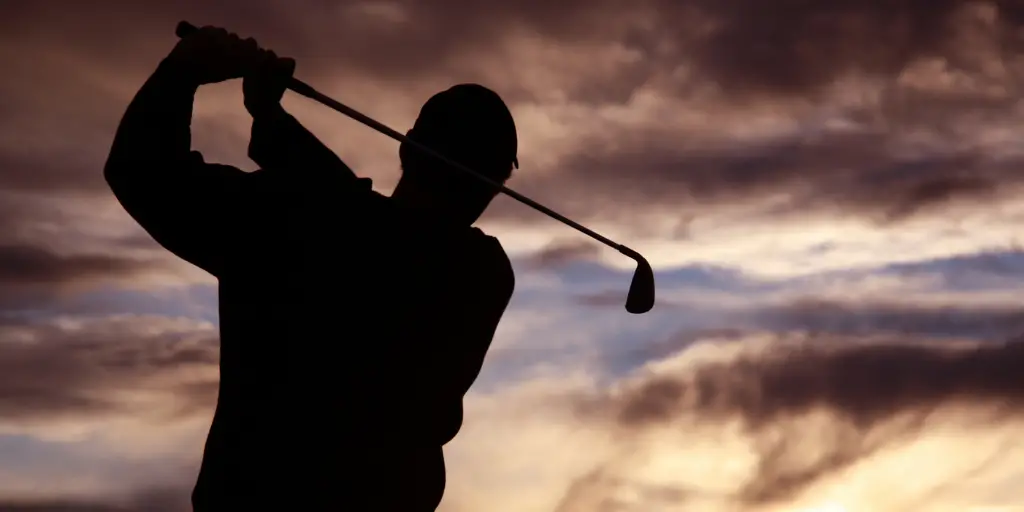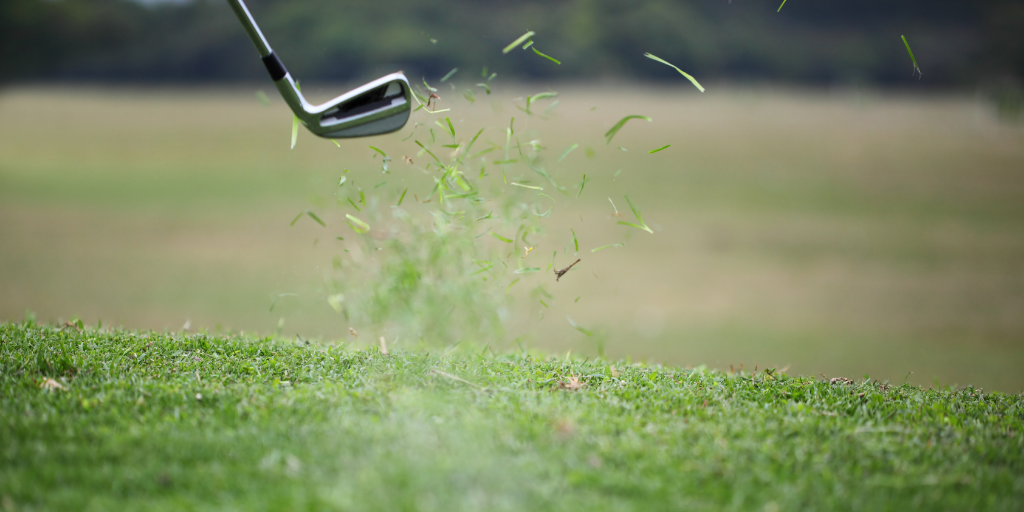Our goal is for you, when you finish reading and putting into practice the things in this tutorial, to become a better putter. Putting leads to lower scores, lower scores lead to more fun, and more fun leads to improvement in your game.
There is only 1 club in your bag that a reduction of the number of times you swing it almost directly correlates to lower scores…your putter. If you could make 3-putting an exception rather than a norm, if you could make 1 extra 15+ foot putt, or if you could learn to lag the ball within 5 feet almost every time, your score would go down.
Distance is gaining in importance all of the time on the tour, but most golfers can show you a direct line between hot putting and winning championships. Learning how to putt, and this is not theoretical or hyperbolic, is quite literally the quickest way to lower your scores and your handicap.
Did we mention that learning how to putt could also help you win those bets you always make with your friends? Take the time to read this and put the tutorials into practice and you will be on your way to learning how to putt.
Three Things You Will Need

To help make this tutorial work for you, there are a few things that you need. In putting, alignment is one of the most important things to get right, and these 3 things can help greatly.
1. A Good Putter
Finding a good putter is a huge step in becoming a good putter. There are too many styles, brands, qualities, and features to even begin listing here. One thing that might help you find the best putter for your game is a link to the “putter” page of our Red Birdie Golf website. While a good putter cannot fix everything, it can help with your alignment, give you increased forgiveness, and even give your ball a more consistent roll.
2. A Golf Ball With a Line
You read no. 2 correctly, the next thing you will need for this tutorial to work is a golf ball with a line drawn around the circumference. While Callaway makes a ball with lines already drawn, I would suggest simply taking a sharpie and drawing a circle around your ball. Make sure it is a permanent marker so that it does not rub or wash off. You will use this line to aid in alignment, help you see how the ball rolls, and to give you confidence standing over the ball for your putt.
3. A Ball Marker
You will also need a ball marker, or a coin for that matter, that you can lay on the green to mark your ball before putting. Putting a solid line on the ball marker will be helpful as well because you can point that line toward the target as and additional aid to help you see where your alignment should start.
Step By Step Instructions

Approach The Green
Finding your line starts as you walk up to the green. Take a look at where your ball is in relation to the hole. Do you have an uphill, downhill, or flat putt? Does it look like there will be a lot of break in the putt and are there any divots or impediments in the way?
Your walk up to the green and towards your ball will get your mind working towards what your putt is going to look like. Some of your first thoughts may change once you get more information, but this you can go ahead and visualize what your putt should look like.
Find Your Line
After the preliminary approach, it is time to really find your line to the green. First mark your ball with the ball marker described earlier. As you are marking the ball, try to determine the line quickly.
You will have 2 more opportunities to change the line, so go with your gut in this step. Look at the green between your ball and the hole and picture the speed of your putt and where the ball might break to the right or left.
Use the line that you have drawn on your ball marker to point in the direction that your read tells you to start your putt. When you place the ball back on the green, use the line on the ball to point to a spot about 6 to 12 inches away that you want your ball to pass over.
Verify The Line
Take a step back now that the line on your ball is pointed down the path that you have read on the green. During this step, you will take a more specific and closer look at how you think the green breaks along with how fast you believe the green to be.
You can change your mind during this step because you will take a longer look at how the green looks and you may be able to see other people putt if they are farther out than you are. If you can get a slight read from someone else based on the speed and direction of their putt, use it to your advantage.
The key to this step is to be confident of the line you have chosen and point your ball directly down that path.
Setup
At setup, you want to square your hips, feet, and shoulders to the line that you have already marked and chosen. During this step you want to get comfortable and relaxed, and you do not want to second guess the line you have chosen.
You will set your stance and your mind on the stroke you are about to hit, but you have to trust that you have done the initial steps correctly.
Practice Strokes
Initially you will setup a step or 2 back from the ball so that you can take a couple of practice swings. You want to begin to set your backswing and your tempo and get a feel for the swing you are about to make.
I set the ball up with the inside of my front foot, and when I first began putting, I would set my back foot up about the distance that I thought it should go in my backswing.
While I do not do that anymore, it was a good that if my feet were closer together I needed a softer swing and vice versa for when my feet were farther apart. The bottom line is that during this stage you want to practice the stroke you are about to take focusing on the speed and alignment that you need.
Commit
Now is when the rubber meets the road. You have the line, you know the distance, you feel comfortable in your stance, and you have even taken a few practice swings so that the variables are minimized. Now you commit to the process that you have already played out. You stand over the putt and commit to the read that you have made.
But wait! There is one more thing to know before you finally strike the ball and hear the sound of polyurethane rolling around in the hole. This is very important because doing this one very simple and ordinary thing could save you huge on your scorecard.
Do not lift your head before you hear the ball rattle into the cup!
This is so important because our natural instinct is for the instant gratification of seeing the ball fall into the cup. The truth is that you should never see a putt less than 10 feet away go in. And no, not because you are missing them, but because you are not picking your head up and missing putts because of it.
One of the keys early on in your putting journey is to not focus on the results. Those will come if you are doing the other things correctly. To start with, make good contact. This includes not moving your head until the ball falls into the cup.
Start the ball on the right line and keep working on reading the green. Look at how your ball is rolling. Is it rolling end-over-end and is it staying on a good line? Is your speed good or are you leaving everything long or short or both?
Commit to the process and to the things that you can control, and the results will come as you gain experience.
5 Keys To Good Putting

Of course there are more than 5 keys to good putting, but doing these 5 things well will get you on your way. It is also important to note that you will not get better at putting unless you do one very specific thing…Putt!
When you are first learning anything, it does not come naturally. When you are standing over a putt starting out, you are thinking about all of the tips and rules that seem to go hand-in-hand with a good putt and it just does not come naturally.
However, if you practice enough, things start to come naturally. You do not have to think about every piece of advice separately because it all comes together in the natural and athletic motion that we call a golf swing. For now, however, do the best you can to focus on these 5 things.
1. Solid Contact
If you do everything else 100% right and make poor contact with the ball, then all you have done is make a bad putt. Poor contact will make you leave the ball short, hit the ball long, or even send it for left or right because of the angle at impact. If you are using a blade putter, which the majority of golfers still do, the need to make solid contact is even more important.
Just like any other golf club in your bag, your putter has a sweet spot that is found in the center of the clubface and extending various distances based on the forgiveness of your putter. If you hit the ball on the sweet spot of the putter, then everything else you have done setting up the putt will be accomplished. If you miss the sweet spot, then your results will not be what you were hoping.
A good drill to help you make solid contact is the “tee gate” drill that was made famous by Tiger Woods. Click this link and it will take you to a video on golf.com.
2. End Over End Roll
As was mentioned before, the line that you drew on your ball with a sharpie will help with alignment, but it will also help you to see whether or not your ball is getting an “end-over-end” roll. If your ball starts out with backspin or by hopping off of the ground before settling into its roll, you are going to miss a lot of putts.
Your putting stroke should strike the ball in the center and cause it to start an immediate “end-over-end” or topspin roll. This type of roll is smoother on the green and gives you optimal distance. It is also the most direct path a ball can take and has the least amount of variables connected to it.
Some golfers will see their ball roll with sidespin rather than topspin. Every club in your bag has the potential to give you side spin that will send your ball off target almost immediately. The best example is with your driver.
When you mishit a driver or come too far from the outside or the inside, you either hook or slice the ball. The sidespin that this type of swing puts on the ball kills your distance and your accuracy.
On the greens, the sidespin will not be as pronounced, but the results will be equally off. Just the slight amount of sidespin on a putt can push your ball to the right or left and cause you to miss the putt.
It might not go out of bounds like the slice you hit off of the tee, but it will add a stroke or two to your score.
This is a golftv.com video of what it will look like for your ball to have this type of roll. It will also give you an idea of how to use the line that you drew around your golf ball to see how the roll should really look.
3. Distance Control
Controlling the distance on your putt is one of the most difficult things to do at any skill level. The initial tendency of most golfers is to leave putts short because you do not want them rolling off of the green or giving you a long second putt. Distance control comes with practice both from a psychological standpoint and a skill standpoint.
There are 2 types of putts when it comes to distance as well. When you are a long way from the hole, your goal is to 2 putt. A lag putt is a putt that you just try to get close to the hole without putting all of your effort into making the shot.
In this type of putt, you visualize a 1-2 yard circle around the green and your whole goal is to land it somewhere inside that circle so that your next putt will be from less than 6 feet.
The other putts are those that you are trying to knock into the hole. Medium distance putts are difficult because you are trying to make them but you are ok if you are a couple of feet one way or the other. Shorter putts are the ones where you can really feel the pressure.
You know you should make it, but you cannot tell how quickly it will break or how hard you need to hit it. Our advice, be firm on short putts. Hit them through the break into the center of the cup and leave no room for variables to enter the equation. Never leave a short putt short, always attack them and hit them straight in.
Finally, distance control is also difficult because there is no standard speed green. Every course is just a little different in the type of grass and the speed that their greens produce.
It is important to get some practice in before every round that you play so that you can get a feel of how the greens are that day and on that course. It is basically impossible to read speed just by how a green feels.
You have to experience it and practice on it or it will take you a few holes and a few strokes to learn what you are up against.
4. Find Your Line
Finding your line on the putting green is difficult. There are so many variables that come into play, and the only way to really get better at lining up your putts is to do it and do it often.
The key to finding your line is that you can break your putting stroke and setup into parts. When you strike the putt, your goal is not to hit it into the hole right away.
Your goal is to start off on the line that you chose so that the work that you did to lead you there pays off. Aim for a spot 6-12 inches ahead of the ball and trust your read.
5. Reading a Green
Your ability to read a green will improve with time, so patience is key. The first greens that you will learn to read are the greens at your local course. You will play them often and start to know where they break and where they stay straight.
The bigger challenge comes when you play multiple golf courses and have to read greens “cold” because you do not have time to do the research and learn them. Here are a few tips for reading greens:
- The first sight is often your best sight. You do not want to second guess your self too often, and most of the time your gut is right. Your eyes and your mind can play tricks on you, the more you stare at the green, so go with your instinct.
- Read putts from behind the hole. Do not solely focus on what you see looking from behind the ball, you will see as much or more by going behind the hole and working backwards to the ball.
- Read with your feet. When you stand next to the ball, the position of your feet can help you tell the lie of the ball. If the ball sits over your feet then you know that the lie is slightly higher than you first thought. Do not be afraid to use what you sense and feel in your read.
- Speed does not always kill. Do not be afraid to trust in your stroke and your accuracy on short putts and knock the ball through the break. It is the easiest and most straightforward way to make a short putt.
Conclusion

I hope you enjoyed this tutorial and learned some new drills and tips that will save you multiple strokes every round of golf. Putting really is the easiest way to lower your score and getting these things right will help you do just that.
The best way to get better at putting, of course, is to practice putting, so take these tips and ideas out to your local putting green and get ready to see your handicap go down.
If you learned something by reading this tutorial, or have any questions about what was written, just comment below and we will reach back out to you. Also, do us a favor and share it on your social media accounts so that your friends and family can learn this as well.











